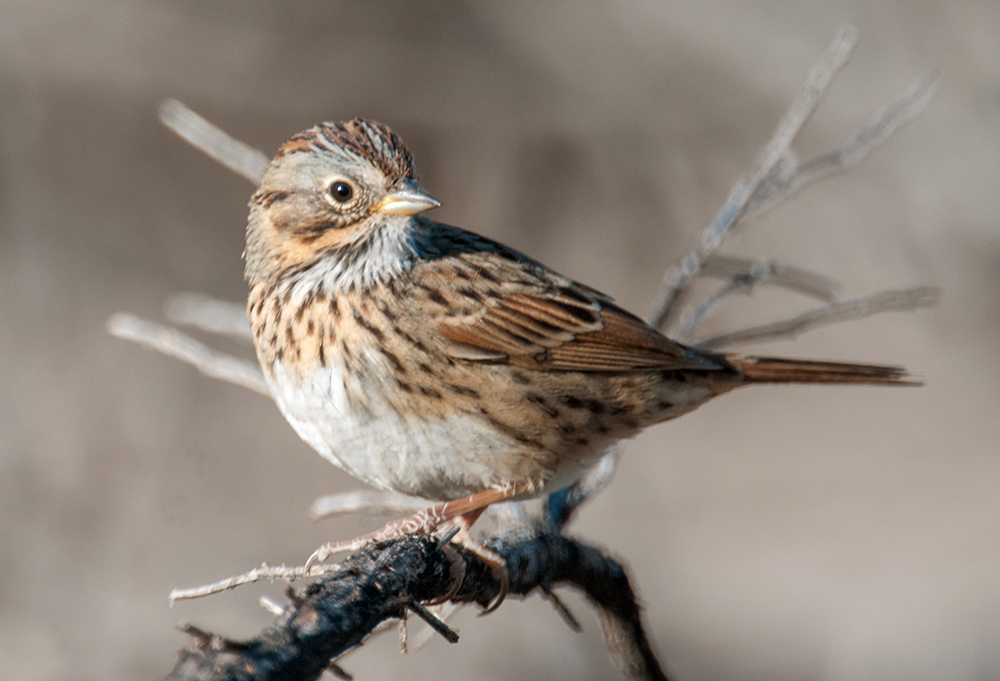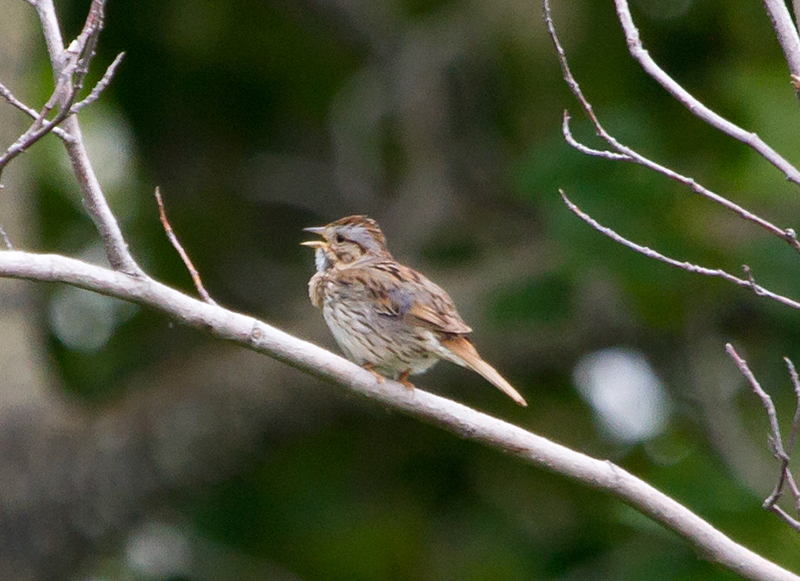| Early Spring Date: | April 20 |
| Late Spring Date: | May 19 |
| Infrequently Seen | |
Spring: Lincoln's Sparrows are uncommon in the Washington metro area. They pass through on their way to their breeding grounds in the northern United States and Canada. The few who have been at Monticello Park have been seen around the middle of May.
Fall: A Lincoln's Sparrow has never been recorded at Monticello during fall migration.
Where to See Them in the Park
Lincoln's Sparrows usually forage on the ground or in low vegetation, and they sometimes will go into the stream.
Physical Description

The breast and flanks of Lincoln's Sparrows are buffy with black streaks. The face and throat are gray, and the crown has brown stripes with small black streaks. Lincoln's Sparrows have a buffy malar (the stripe coming down from the bill). The sexes are similar. It is easy to mistake one for a Song Sparrow, who is slightly larger.
Vocalizations

You are not likely to hear a Lincoln's Sparrow sing at Monticello, which is unfortunate. The song is a long, exuberant trill.
Hear the vocalizations of the Lincoln's Sparrow.Notes
The Lincoln's Sparrow was not named after the 16th President of the United States. It was named after Thomas Lincoln, who lived from 1812 to 1883. When he was 21, he went with John James Audubon on a trip to the coast of Labrador. During the trip, Lincoln discovered a new sparrow, and Audubon named it after him.
Origin of Names
Common Name: Lincoln's after American ornithologist Thomas Lincoln. Sparrow from the Anglo-Saxon spearwa, which means flutterer.
Genus Name: Melospiza means song finch.
Species Name: Lincolnii after Thomas Lincoln.
Lincoln's Sparrow video footage
Return to the Index
